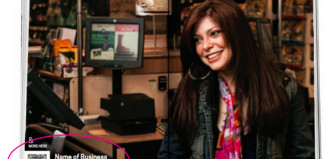In Italian the word is “sfida”–a challenge, a difficulty, an endeavor worth taking. And here lies the rub in the world of pairing wine. Beyond the difficulties of pairing wine with chocolate, there is another nobler cause, a further island, a more difficult task for atlas. That is taking gelato, ice cream, or frozen dolci–petite sweets, push-ups, soft serve Dairy Queen dipped cones, hand cranked rock salt creations, or traditional gelato–and pairing them with wines.
Sometimes, as we know from studying geology and subscribing to the great story of the once united Pangaea, when two strong forces come up against one another, it can be difficult to coax them into sitting peacefully side-by-side. We may get creativity, but we most always get tensions that lead to faults, quakes, new demarcations. And so it goes.
It is almost set aside as a poet’s task, to try and juxtapose two difficult and independently wonderful things and draw lines of prosody, metaphor, and utilitarianism around them. And it is the task of some creative sommeliers as well.
First among the cadre of sommeliers to attempt this rogue and unprecedented study was Giuseppe Vaccarini, who first took the title of Best Sommelier in the world in 1978 (while I was learning to tie my shoes by myself). He has since defended that title in Venice, Paris, Rio de Janeiro, Tokyo, Vienna, Athens, Montreal and Rhodes over the years. He has led the Association of Italian Sommeliers and launched the Association of Professional Italian Sommeliers, of which I am a member, and within which I had the privilege of participating in his wine and gelato pairings as a student, as he released the first Codex and treatise on wine and gelato pairings. And perhaps it was his work as Sommelier Director at Gualtiero Marchesi’s epynonymous Milan restaurant where he was pushed by Italy’s most celebrated chef to create something the post-modernists believe is impossible– something that had never existed before.
Especially among the Italian gastronomes and “galosi” (a term to describe a gastronome, epicurian, and gourmand combined), pairing wine and gelato was seen as an almost taboo task, one outside the boundaries of traditionalism. It was because the taste profiles seemed impossible to understand in a way that could be recapitulated favorably as a marriage. And in order to determine if it could be done, there was a lot of play, experimentation, testing, and the development of a schematic for deconstructing and analyzing the flavor components in both. At the end, a few rules of thumb seemed to emerge.
For one, it is best in most cases if there is some form of cream base in the frozen treat, as some fruit gelatos and sorbets are more challenging to pair due, in part, to clashing acidities, though champagne has been traditionally a safe go-to. Second, it is best if the gelato or ice creams are served a bit less frozen than how they are when stored. It is best for them to start to become softer for the aromas and flavors to be more accessible and detectable. Then again, there is an optimal band of temperature. The wines should not be too warm either. Keep Goldilocks in mind–it needs to be close to just right. Third, keep in mind that sugar is the greatest common factor and the string that draws these together; therefore, think of the pairing game as starting here.
In thinking about interesting pairings, it’s like imagining the perfect kiss, or “bacio” of flavor from one to the other. i share here some of the favorite pairings of Vaccarini’s famous Codex and a few of my core selections.
With dark chocolate gelato, Recioto della Valpolicella Valpantena DOC is an ideal companion. As the bittersweet characteristics of the chocolate come out in aroma first then taste, then the richness and creaminess evolve, the wine must have a high enough alcohol and a rich mouth feel to sustain these sensations and draw out the textural components until they linger. I recommend the producer Bertani, one of a few producers in Italy taking the time to define micro-terroir or micro-climates on their property, in Burgundian fashion- resulting in fine tuned selection of very high quality and particular grapes that are then dried on a kind of lattice in a drying room (along with the Amarone grapes). Bertani has a relentless creed to improvement over centuries. Don’t miss this one next time a pint is calling your name at midnight. The wine is worth the special order.
With pistacchio gelato, the pairing becomes even more complex and interesting for the entrance of the underlying saline, savory, and nutty characteristics that mix and meld with the cream and fats. For this, a Vin Santo, Italy’s literally translated “holy wine” is delectable. In this process, the just harvested grapes are hung to dry and concentrate as the water evaporates out of them before pressing and fermentation. A great traditional producer is Castello di Volpaia, where the drying room for the grapes is hidden inside an old stone building above the winery in the Borgo, or small hamlet, that belongs to Volpaia. Another producer I like is Felsina, and there is a very limited amount of Monsanto vintage ’93 available in Central Texas. For one of the most mind-blowing and unusual pairings I have tried, pineapple gelato unravels like yarn under a kitten’s playful paws when served with Moscato Giallo passito from Alto Adige, a method of making a dessert wine where the grapes are dried on mats and then collected in a jar and pressed, concentrating all the flavors and intensified sugars. The acidity in the pineapple, even when ripe, is a tiger to tame. Try this, just try this. If you cannot find passito of this grape, try a Passito Pantelleria DOC, from the island of Sicily. Pellegrino is a producer you should be able to find.
And lastly, for strawberry gelato or a Neopolitan Sandwich, there is absolutely one wine I think of first: Brachetto d’Acqui, not a DOC, but elevated to a DOCG, of the Piedmonte region of Italy, a dark pink red sparkler (actually frizzante, not quite a full-on bubbles) that you will remember forever after you start down this road. Brachetto is a singular sip. It is bright and each taste refreshes your palate. It is unmistakably evocative of strawberries and sometimes dried rose petals. Brachetto is also ideal for dark chocolate. Some recommended producers are Marenco and Coppo.


































